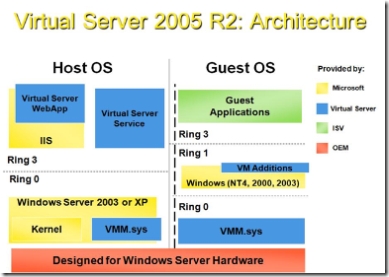Dave's new laptop - Another reason to like Virtual Server 2005 R2 SP1
So my laptop is up and running with Virtual Server 2005 R2 SP1 (beta 2) and I decided to start 'playing' with Longhorn...
I created a Virtual Machine with 1GB of memory and a new virtual hard drive. I put the Longhorn ISO into the virtual DVD drive and performed an install. 98 minutes later (yes - one hour and 38 minutes) I was presented with a Windows desktop.
Then I remembered that one of the SP1 features is support for Hardware Assisted Virtualisation (both Intel & AMD). My laptop has that feature, so I rebooted and switched it on in the BIOS.
The exact same process now took a mere 33 minutes - that's a third (that's some performance improvement).
Unfortunately (for me) Hardware Assisted Virtualisation only helps operating systems that we have not written Virtual Machine Additions for (we obviously have them for all current Windows versions and a good few of the mainstream Linux distributions). An installation of Windows has not got the Additions in it yet, so it benefits from the hardware assisted stuff.
One of the things Virtual Machine Additions does is 'con' an operating system into believing it's running in Ring 0 on the processor (Ring 0 = Kernel, Ring 3 = User). We run our virtualisation layer in Ring 0 and let the guest operating system run in Ring 1 - which lets all the applications (running in a virtual machine or not) run in Ring 3. That's how we get Virtual Server to perform so well (as good as ESX).
